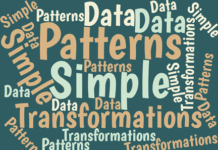Why INDEX-MATCH Is Far Better Than VLOOKUP or HLOOKUP in Excel
(Download the workbook.)
Excel’s VLOOKUP function is more popular than the INDEX-MATCH function combination, probably because when Excel users need to look up data then a "lookup" function...
An Introduction to Excel’s Normal Distribution Functions
(Download the workbook.)
When a visitor asked me how to generate a random number from a Normal distribution she set me to thinking about doing statistics...
How to Work with Dates Before 1900 in Excel
(Download the workbook.)
If you work with dates prior to the year 1900, Excel's standard date-handling system will be no help. However, there are several...
How to Use Excel Formulas to Calculate a Term-Loan Amortization Schedule
"How do I calculate cumulative principal and interest for term loans? I have scoured the web for a function that will perform this task,...
How to Create Monte Carlo Models and Forecasts Using Excel Data Tables
(Download the workbook.)
(This is the second of two articles about normal distributions. The first article is, How to Return Random Numbers from a Normal...
Use MS Query to Treat Excel as a Relational Data Source
Charley's Note: Because MS Query hasn't changed much since Marty Ryerson wrote this article years ago, his instructions are still quite accurate. I have,...
How to Create and Use Dynamic Range Names in Excel
(Download the example workbooks.)
We Excel users often refer to ranges that need to move or expand in future versions of our reports. For example:
...
Find Leading Indicators Using Automated Cross Correlations in Excel, Part 1
It all seems so simple...
To improve your forecasts of sales or other measures, you simply need to find leading indicators...measures that are highly correlated...
How to Create Cycle Plots in Excel to Chart Seasonal Sales Data
If your company's sales are seasonable, you've probably seen a chart that looks something like the first one below.
This Excel chart shows the continuous...
XLOOKUP vs VLOOKUP vs INDEX-MATCH vs SUMIFS
SUMIFS? Really?
Why is SUMIFS included among those lookup methods? I'll explain in a few minutes.
But first, let's look at the lookup methods shown in...





























